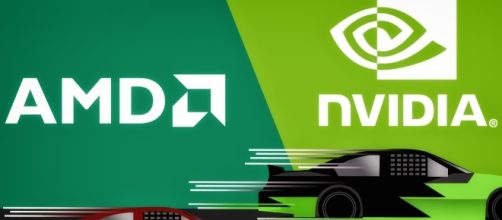The battle between leading GPU-manufacturers is growing intense by the day. Each player in the market is consistently working towards bringing the best of what they have, to the table. The two leading contenders at the moment are unquestionably AMD and Nvidia. They are also joined by equally threatening competition delivered by Intel.
NVIDIA is the leader
Talking about NVIDIA first: The company has primarily been focusing on the GPU sector, specifically targeted towards ardent gamers for a long time. In fact, as reported by Benzinga, the firm makes approximately 50 percent of its total revenue from the gaming market itself.
On the contrary, AMD has been exploring several other niche markets apart from the gaming sector as well. It all began back in 2005 when AMD acquired ATI Technologies for a whooping $5.4 billion. The firm since then has been going all out in delivering the expectations of majority of the consumers — be it working professionals or hardcore gamers. Lately, the importance of crypto-currencies has also opened another possibility for these firms to explore.
GPU market is growing fast
Several concepts such as Bitcoin, digital currencies and crypto-currencies have been gaining a lot of importance off late and the companies are ensuring that this segment is also taken care of. Coming to the desktop market, the primary dominator in this sector is undeniably Intel.
The technology-giant holds a total of 71.1 percent of the market share in the desktop GPU space. Meanwhile, AMD only holds around 13.1 per cent of the market share, followed by NVIDIA that holds merely 15.8 percent.
The main competition however, exists between AMD and NVIDIA. The former has been keeping up a strong front since 2014.
There is no denying the fact that AMD faced quite a few hurdles along the way. For instance, last year wasn’t particularly good for AMD. As can be recalled, AMD launched its Polaris GPU back in 2016. While it was the best in the market at that moment — it didn’t take long with NVIDIA to turn the tables around. NVIDIA went on to launch its GeForce GTX 1080 Ti along with GTX 1080 Titan XP as well, which worked out at beating AMD altogether.
With hopes of reviving its lost glory, AMD took 2017 as an opportunity to introduce its flagship products. It, however, became particularly difficult for the company to keep up after NVIDIA started posing a severe threat to them. This year has a lot packed for the fans. Both the companies are gearing up to introduce the best of what they have to offer to the fans.


